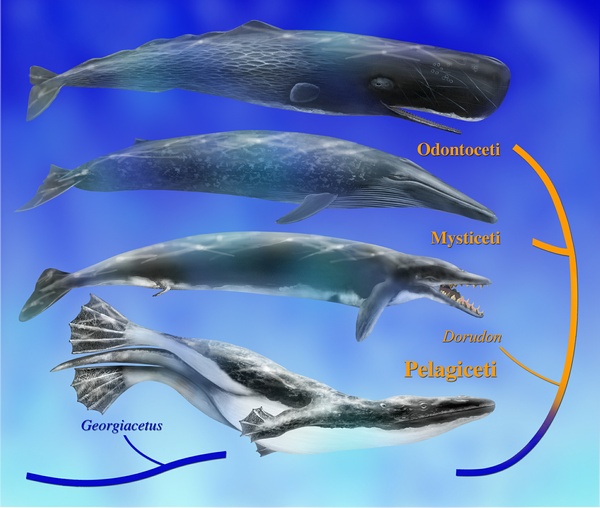The crashing of the enormous fluked tail on the surface of the ocean is a “calling card” of modern whales.
Living whales have no back legs and use their front legs as 'flippers' that allow them to steer. Their tails provide the powerful thrust necessary to move their huge bulk.
Yet this has not always been the case, according to research in the latest issue of the Journal of Vertebrate Paleontology. Paleontologist Mark D. Uhen of the Alabama Museum of Natural History describes new fossils from Alabama and Mississippi that pinpoint where tail flukes developed in the evolution of whales.

“We know that the earliest whales were four-footed, semi-aquatic animals, and we knew that some later early whales had tail flukes, but we didn’t know exactly when the flukes first arose,” said Uhen. “Now we do.”
The most complete fossil described in the study is a species called Georgiacetus vogtlensis. Although not new to science, the new fossils provide some very significant new information. In particular, previously unknown bones from the tail show that it lacked a tail fluke. On the other hand, it did have large back feet and Uhen suggests that it used them as hydrofoils. Undulating the body in the hip region was the key factor in the evolution of swimming.
The very different body forms seen in the lineage of whales point to very different methods of swimming underwater. Previous studies have proposed a possible process to evolve from the ancestral form, paddling with all four legs, to the modern-day whale in which the tail oscillates up and down. Living vertebrates that are capable swimmers employ a whole range of different techniques, including five particularly well defined methods: quadrupedal paddling, paddling only using the back legs, undulation of the hips, tail undulation, and tail oscillation. Interestingly, it had been suggested that during whale evolution each of these steps occurred in turn, but that the hip undulation stage might have been by-passed. The new discoveries indicate that the complete opposite was true, and as Uhen says “wiggling hips were a significant step in the evolution of underwater swimming in whales.” So now we know that Elvis was not the first to owe success to undulating hips!





Comments